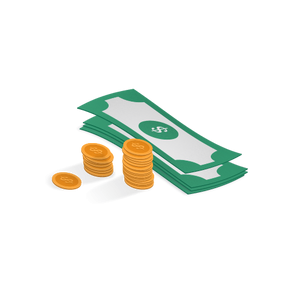When times are tough and markets are shifting, cash is king and liquidity will see your business through. If your business runs out of cash, you won’t be able to make payroll and pay your expenses in time.
Your cash flow is what keeps your business going, especially if you’re just starting out. Being able to predict your cash flow will allow you to be prepared to pay an expense or take out a loan at the right time. Read on to find out how cash forecasting is so important for your business.
Cash Flow Forecasting 101
Cash flow forecasting refers to the modeling of a company’s future financial liquidity. In layman’s terms, this means cash forecasting predicts how much cash your business will have in the future. Cash forecasting encompasses all assets in your treasury, including cash and short-term investments.
Companies who focus solely on profit and not on cash flow are not protecting themselves against economic problems. Even if you are making a healthy profit, the end of the fiscal year can still find you out of money. This is because money from sales often takes time to become available and suppliers need timely payments to continue working with you.
You can have a positive profit but negative cash flow if you pay faster than you get paid. To avoid this, you need a cash flow forecasting to manage your spending and determine how to divide your assets so you don’t run out of cash.
According to recent surveys, 15% of businesses have less than one month of cash overheads and more than 10% of all businesses have no idea how much cash they actually own.
The Benefits of Cash Flow Forecasting
In addition to having enough money to pay your expenses and be flexible, there are several other benefits to cash forecasting. We are examining the most prominent ones below.
Financial Management
Forecasting allows you to identify holes in your budget and find the appropriate financial solutions to fix them. By knowing how much you have to spend, you can ensure you have money to fulfill all your obligations towards your suppliers and your workers in time.
You can also use forecasting to identify customer issues, as well as design your business strategy more effectively. If you take out a loan, your lender will need periodic forecasts to check on your business’ health.
Growth
Even if you are getting new customers and more orders each month, you won’t grow unless you have some liquidity. If cash is flowing out of your business faster than you are making it, you might just be riding a bubble about to pop.
With cash forecasting, you can gauge how much money is going out to fuel your growth and manage your assets so you handle the extra workload more effectively. If you don’t have a long-term cash flow projection, you might end up losing more in the long run, even if you are growing fast.
Line of Credit
If you run out of money it’s going to be too late. Forecasting allows you to predict when you might need to take out a loan, ensuring you have enough time to identify your needs and negotiate favorable terms.
You might also be able to avoid taking out a loan if you can adjust your budget in time. Forecasting might hint you should slow growth until your infrastructure catches up. If you have to pay premiums to maintain your expanded operations, this could turn your cash flow into negative even when your profits are increasing.
Credit Sale Payments
Credit sale payments can lag as much as 3 months to appear in your bank account. If you are making a significant portion of your sales through credit, this will impact your profit and loss statements.
Your cash forecast will compensate for the lag between credit sales and payments so you will know when the cash will be available to your business.
Long-Term Projections
Cash flow projections allow you to see back in time and examine the history of your business. This way you can anticipate peaks in demand and make sure you are always stocked and operating optimally.
If there are certain points in time when your business is particularly vulnerable to a financial downturn, you will know how to prevent this by creating a cushion.
How Does Cash Forecasting Work?
The most straightforward method of forecasting examines all your receipts and bank statements to identify your actual liquidity. Accountants keep digital records of receipts from recent sales, bank transfers, payroll, debt interest, and other financial proceeds.
There are 3 indirect methods to calculate cash flow. These rely on your balance sheets and your projected income statements.
These methods are:
-
Pro-forma balance sheet
-
Adjusted net income
-
Accrual reversal method
With pro-forma balance sheet method, accountants look at your projected book cash account to make a forecast. The accuracy of this method relies on the accuracy of your balance sheet account.
The adjusted net income method examines your EBITDA to gauge your operating income and subtracts payables to forecast cash flow.
The accrual reversal method calculates cash flow by using statistics and algorithms. This is more suitable for larger businesses where there is just too much going on to be able to accurately calculate all payables and receivables.
Get Automated Cash Forecasting, Accounting, and Benchmarked Reporting
Here at Ceterus, we understand the importance of cash forecasting for your business. Our mission is to help our clients through expert accounting services tailored to each client’s individual needs.
Contact us today to find out how we can empower you to focus on your business by taking accounting off your plate.




